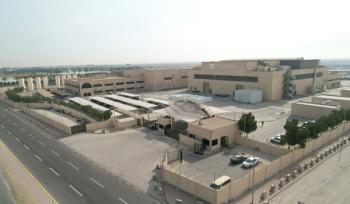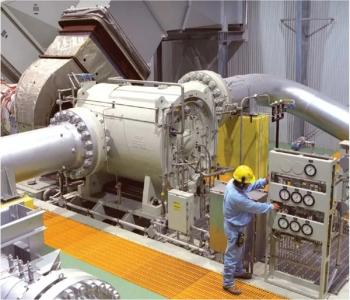
User group zeroes in on dewpoint in natural gas
Turn the clock back 40 years to 1975. Gerald Ford served as U.S. president, the Vietnam War has ended, the movie “Jaws” premiered, and Microsoft first saw the light of day. It was also the year the Combustion Turbine Operations Technical Forum (CTOTF) began, “when a small group of operators got together to discuss problems with their gas turbines,” said Jack Borsch, Chairman of CTOTF, as he welcomed attendees of the CTOTF Spring 2015 conference in Fort Myers, Florida.
CTOTF splits its twice-yearly conferences into a series of roundtables. This year, they included O&M and business best practices, air and water, NERC and FERC matters, and longer tracks specific to OEM matters. The OEM tracks were split into GE F- and FA-class, Siemens (Rolls-Royce) aeroderivatives, GE E- and EA-class, PW Power Systems, Siemens Frame turbines, Alstom turbines, Mitsubishi turbines and electricals.
The organization brings together a wealth of industry talent to impart the latest data to users and respond to their concerns. This included speakers from Edison Electric Institute (EEI), PowerPhase, Young & Franklin, Intertek AIM Engineering, Allied Power Group, McCormick and Munson Technologies, Zegaz Instruments and NAES, as well as plenty of OEM and user input.
Ozzie Lomax, Director of Gas Turbine and Renewable Generation at Ameren Missouri and Chair of the CTOTF Industry Issues Roundtable took gave voice to user concerns about recent OEM mergers, acquisitions and joint ventures (Siemens-Rolls-Royce, GE-Alstom, MHI-PWPS, MHI-Hitachi). He said some members were wondering how this would impact their plants in terms of parts, response times and availability. He introduced speakers from Mitsubishi Hitachi Power Systems (MHPS), PW Power Systems and GE to discuss the deals’ consequences.
Katy Wilner, General Manager, Sales for Power Generation Products North America at GE Power & Water, said GE would bring its analytics and services software to the Alstom fleet, once the deal closes. She felt the merger would give a broader solution base for the supply chain, better sourcing and stronger R&D for both companies. The deal is expected to close mid-year. Wilner also mentioned that PSM represented an attractive element of the deal, and was an area which GE would continue to invest in.
“Our customers have been asking us to service non-GE equipment and now we will have that capability once the acquisition closes” she said. “The Heat Recovery Steam Generator (HRSG) part of Alstom will also be a benefit to GE in terms of breadth of service and better cycling operation.”
Dewpoint
Natural gas quality is not what it used to be. When conventional sources predominated, gas quality was consistently good. But the rise of unconventionals such as shale gas has come with a quality price. The gas supply tends to contain heavier hydrocarbon components.
Ralph Jones, Plant Manager at Essential Power’s 680 MW Rock Springs Generation Facility, said he had experienced problems with the quality of gas coming into his GE 7FA simple cycle facility. His plant receives gas from the Marcellus shale field. Jones said that it contains more than 20% ethane and lots of sludge. This falls outside the spec for the fuel nozzles of the 7FA and can damage them. “We had issues with shale gas dewpoint varying over the course of a few hours,” he said.
The dewpoint of natural gas is a key quality parameter in the O&M of combustion turbines. This figure refers to the temperature at which the gas stream undergoes a phase transition to liquid at a given pressure. The hydrocarbon dewpoint and the water dewpoint are often a part of the specs for GTs.
“Knowledge of this figure is essential in the operations of natural gas pipelines, gas storage and gas turbines,” said Sohrab Zarrabian, CEO of Zegaz Instruments. “Ten years ago, the quality of gas delivery in the Northeast U.S. was good enough to run gas turbines, but the greater usage of shale gas has increased the focus on determining the quality of the gas that is extracted and processed.”
Measured dewpoints, he said, are almost always higher than user expectations derived from the producer of the gas. The producers use gas chromatography and equations, which include assumptions that can be inaccurate. According to Zarrabian, this method is rife with error. Furthermore, the plant manager is given a definite figure whereas hydrocarbon dewpoints fluctuate with pipe temperature. Nighttime dewpoint is different from daytime. During the day, the heavies evaporate, and condense at night to form more liquids. Ideally, there should be no liquid at all in the pipe.
When you measure dewpoint accurately, you see a wide variance between different regions of North America and between one country and another. Speaking generally, warmer climates have higher dewpoints. But pipelines with multiple inputs from different suppliers can show vary widely.
“Pipelines with unmonitored inputs show higher dewpoints with larger variations,” said Zarrabian. “Process upsets are a fact of life so plants can suddenly get very high dewpoint gas.”
To make matters worse, it is expensive to get the heavies and water out. High dewpoint gas can affect the accuracy of flow measurements, which could impact profitability. More pigging is needed to remove the sludge resulting from high dewpoint gas and pipes can clog.
This sludge can be looked upon as the BTUs the pipelines paid for that they do not get to sell. In the Southern U.S. when it is warm, they have to use more power to provide high quality gas, said Zarrabian, and economics can sometimes lead to a lessening of quality control. Gas turbines can get damaged by poor quality gas.
Zegaz Instruments developed a dewpoint detection method called Chilled-Evanescent Infra-Red Spectroscopy (CEIRS). It detects the hydrocarbon and water dewpoint via an optical crystal with infrared beams used to detect condensation and find the dewpoint.
A presentation on advances in submicron prognostic machinery lubrication analysis and contamination control was given by Dan McCormick, Vice President of Sales at McCormick and Munson Technologies. The basic premise is that sludge and varnish precursors and components exist primarily in the submicron range before and during all varnishing events. A new particle counting and sizing technique removes many of these in the rage of 40 to 1,500 nanometers.
“88% of insoluble contaminants in lubricants cannot be identified by existing oil analysis methods,” said McCormick. “Aeration and oxidation are major factors in accelerated oil degradation and servo-valve problems. He added that micro-entrained air and moisture is contained in these sub-micron particles. As well as varnish and sludge, aeration can lead to pressure loss. The cornerstones of effective submicron detection are oil analysis, proper sampling and varnish component analysis. Each factor has to be taken into account to correctly diagnose.
The various oil filtration technologies on the market are effective across different particle sizes and temperature ranges. Some are good at lower temperatures while others are better at higher temperature ranges. McCormick advocates the use of a sub-micron particle filtration to capture entrained air bulges, water droplets and submicron sludging and varnishing precursors. This technology uses a laser to illuminate submicron particles.
The last day of the conference continued to deliver O&M lessons. Greg Dolezal, Maintenance Manager of Iberdrola Renewables Klamath Cogeneration facility (and a member of CTOTF), looks after two Siemens 501FD3 units, an Alstom steam turbine and a peaking plant using two PWPS FT8-1 TwinPacs. He recently replaced an older control valve on an FT8 turbine with a 3010E620 gas control valve from Young & Franklin (YF). This followed an earlier project to install an ABB control system, which provided triple block and double bleed fuel controls and a soft-start capability. The addition of the new valve solved fuel control reliability issues as well as tighter sealing to allow it to better serve as a block valve.
“The new control valve operated well at the facility with no issues reported over the course of one year,” said Paul Boeckerman, Sales Engineer at YF. “As a result, Iberdrola has since acquired additional YF valves to implement further retrofits in June 2015.”
For more, read May-June 2015 issue of Turbomachinery International magazine
Newsletter
Power your knowledge with the latest in turbine technology, engineering advances, and energy solutions—subscribe to Turbomachinery International today.




